#Antinos
Note
i accidentally typed “antino” instead of santino so ig he’s an ant now (he’s the size of one too)
LMFAOOO PLEASE 😭
He's just a silly tiny guy antino :3
7 notes
·
View notes
Text
Yandere Family Madrigals
TW: Yandere themes

Oh, well this is going to end up way badly-
It won't depend if you are related to them by blood or they have adopted you. You are their family and they are your family right?
First of all you can contact with people other than them but they should approve of those people or they can be the family's friend.
Did I mention that as a family they are way more overprotective than single. They somehow know what you are doing and what you are not doing. They know your hobbies.
Dolores can hear everything so don't ever try to hide anything from her.
Isa has always been the center so she expects a lot of attention from you. She would want you to give her as much as attention you can give her and no one else.
However, if you are not impressed by her manners or such then she would use her powers and make flowers grow whichever you like.
She will also see this is as a competition to have much more attention to herself rather than her cousins or siblings.
Camilo will shapeshift and make you laugh. He can always put up a smile on your face by doing random things. Sometimes he will shapeshift into strangers and do weird actions which will make you laugh so hard that your stomach will start hurting.
Louisa does not want any attention or such but she wants to feel loved and useful to you in any situation. She is also very comforting as compared to the others in the family.
Now comes Bruno. First of all when he had been hiding himself all those years ago he would still communicate with you.
He will talk through tunnels or walls also there are a few holes so he might even watch you over too. If he notices that something is wrong he will immediately tell it to Dolores or there are chances that Dolores would have heard what had happened with him.
Antonio loves playing with you he will even make you meet the animals which you have ever wanted to observe. They can be wild or be pretty tame for Antonio it is just a slice of cake.
Mirabel thinks that she is not enough for her friend because she does not have any gift rather than her siblings or cousins who do have gifts.
After Bruno is back to family he will spend more time with you. Even though he knows a lot about you and will never get bored of you.
However, he did fear that you might hate him, after all everyone hated him so why wouldn't you hate him?
The elders are slightly better though.
Now Pepa is ready to flood almost all the village for you. She won't hesitate twice if someone or almost everyone in the village shamed you for reasons. She won't tolerate anyone doing bad to you.
On a better note she loves you a lot like a daughter/son.
Julieta will make sure that you eat properly and are in a better health. Julieta will also be the most comforting person in the whole family. You can always rely on her.
Felix and Augustin help you settle in very quickly they make jokes here and there. They know when you are feeling sad and when you are feeling better.
The family love you a lot and will always protect you. Just don't get on the bad side and don't ever try to leave them.
#yandere#yandere headcanons#headcanons#platonic yandere#yandere encanto#yandere magridal family#yander camilo#yandere julieta madrigal#yandere pepa#yandere felix#yandere augustin#yandere mirabel#yandere isabela madrigal#yandere antino#yandere bruno#yandere alma
272 notes
·
View notes
Photo
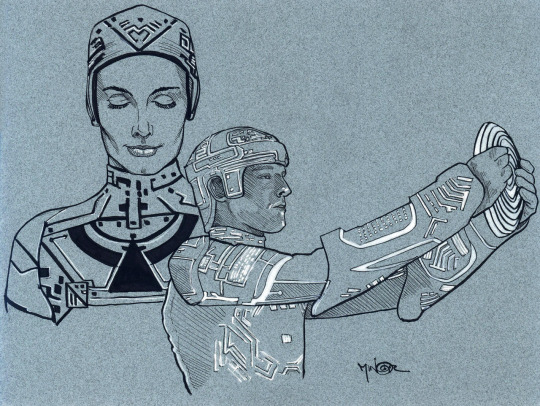
“The Holy Disc of Tron” by Jer Antino.
76 notes
·
View notes
Photo

#i love this photo so much#photos#Yukueshirezutsurezure#ゆくえしれずつれづれ#Antino未deology#jrock idol#alt idol#chika idol#japanese idol#blue aesthetic
11 notes
·
View notes
Text

Vue des ruines de la ville, prise du côté du sud-ouest — “View of the city ruins, taken from the south-west”
Antinous, a Greek boy from Bithynia, was Emperor Hadrian’s closest lover. While sailing the Nile, Antinous drowned under strange circumstances at age 18. Following his death, in a controversial move, Hadrian deified Antinous as Osiris and Dionysos. Additionally Hadrian identified the rosy lotus of the Nile as a symbol of the boy.
Antinoöpolis was founded by Hadrian not too far from where Antinous drowned, and the city became the center of worship for Antinous Osiris. Hadrian would then move to Athens, where he established an annual festival to commemorate Antinous each October: Antinoeia.
Edme-François Jomard. 1817.
7 notes
·
View notes
Text





[Gaball Screen] / Antinos Records /1996
0 notes
Text

"The heat of steel and iron"
listen to ANTINO VIVALDI - SUMMER
247 notes
·
View notes
Text
I think about Circe and calypso a lot. The way we reinterpret them as good women. Because we hate the idea of an evil powerful woman so much, because we don’t want to admit that there is legitimate reading for calypso and Circe both as rapists, because. They can be bad women. Bad people. As monsterous as Polyphemus, as antinoous. They can absolutely be evil, horrible women with a lot of power who do despicable things, who aren’t misguided or mad with love or a cautionary tale about what unmarried women become. They can just be goddesses the same way gods are horrible and awful. It messes me up that we so much HAVE to see them as good people to fit into our worldview. Sure Odysseus sucked. Maybe the people he met did too- there doesn’t have to be a good guy, he’s just the more interesting guy.
76 notes
·
View notes
Text
THIS DAY IN GAY HISTORY
based on: The White Crane Institute's 'Gay Wisdom', Gay Birthdays, Gay For Today, Famous GLBT, glbt-Gay Encylopedia, Today in Gay History, Wikipedia, and more … January 24


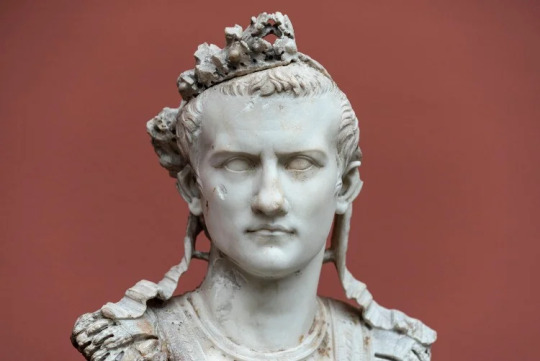
41 AD – Roman Emperor Caligula is assassinated at the Palatine Games by his own officers after a reign of only four years. He was noted for his madness and cruelty including arbitrary murder and arbitrary sex encounters with men, women, and animals, including forcing his officers into regular sex bouts.


Hadrian & Antinous
76 AD – The Roman Emperor, Stoic and Epicurean philosopher Publius Aelius Traianus Hadrianus or as he has come down to us, Hadrian was born in Spain. Hadrian was the third of the "Five Good Emperors". His reign had a faltering beginning, a glorious middle, and a tragic conclusion.
He is considered by many historians as the most versatile of all the Roman Emperors. He liked to display knowledge of all intellectual and artistic fields. Above all, Hadrian patronized the arts: Hadrian's Villa at Tibur (Tivoli) was the greatest Roman example of an Alexandrian garden, recreating a sacred landscape, lost in large part to the despoliation of the ruins by the Cardinal d'Este who had much of the marble removed to build Villa d'Este. In Rome, the Pantheon, originally built by Agrippa but destroyed by fire in 80, was rebuilt under Hadrian in the domed form it retains to this day. It is among the best preserved of Rome's ancient buildings and was highly influential to a many of the great architects of the Italian Renaissance and Baroque periods.
Today we recall his abiding love of Antinous, his eromenos (boy lover), who he honored so greatly in death. It was while visiting Claudiopolis that Hadrian espied the beautiful Antinous, a young boy who was destined to become the emperor's eromenos — his beloved. Sources say nothing about when Hadrian met Antinous, however, there are depictions of Antinous that shows him as a young man of twenty or so. They became inseparable companions and carried out one of the most storied love affairs of history.

Hadrian and Antinous in Egypt
In October 130 AD, while Hadrian and his entourage were sailing on the Nile, Antinous drowned, for unknown reasons. though accident, suicide, murder or religious sacrifice have all been postulated. After Antinous' death, Hadrian's grief knew no bounds, causing the most extravagant respect to be paid to his memory. Cities were founded in his name, medals struck with his effigy, and statues erected to him in all parts of the empire.
Following the example of Alexander (who sought divine honors for his lover, Hephaistion, when he died), Hadrian had Antinous proclaimed a god. Temples were built for his worship in Bithynia, Mantineia in Arcadia, and Athens, festivals celebrated in his honour and oracles delivered in his name. The city of Antinopolis or Antinoe was founded on the ruins of Besa where he died. One of Hadrian's attempts at extravagant remembrance failed, when the proposal to create a constellation of Antinous being lifted to heaven by an eagle (the constellation Aquila) failed of adoption. Legend was that his likeness was placed over the face of the Moon.
Hadrian died in 138 on the tenth day of July, in his villa at Baiae at age 62.


Frederick II & Voltaire
1712 – The Prussian King Frederick II, aka Frederick the Great, was born. (d.1786) Interested primarily in the arts during his youth, Frederick unsuccessfully attempted to flee from his authoritarian father, the "Soldier-King" Frederick William I. Young Frederick persuaded his lover, Hans von Katte, a Lieutenant in the Royal Guard, to help him flee the king's ruthless domination. They were captured and von Katte was sentenced to death. The prince was ordered to be present at von Katte's execution by sword.
For another ten years Frederick had to live under the yoke of his tyrannical father and accept his arrangements for a marriage that was probably never consummated. (Upon his father's death in 1740, Frederick immediately separated from his wife, Elizabeth Christine of Brunswick.)
Frederick was a proponent of enlightened absolutism. For years he was a correspondent of Voltaire, with whom the king had a turbulent friendship. Voltaire was later to write a book exposing Frederick's homosexuality, but it was published only in 1784, six years after its author's death. In his correspondence with Voltaire, Frederick early on evinced a great interest in what we would today call gay culture. In an astonishingly open fashion, this interest was encouraged by Voltaire.
It was not only through literature that Frederick extolled homosexuality. He collected ancient artwork, notably ancient carved gemstones picturing nude athletes and the Adoring Youth, a Hellenistic bronze that had previously belonged to another famous homosexual general, Prince Eugene of Savoy, which he placed in view of his library window. He commissioned frescoes of Ganymede for his palaces; and, in 1768, inspired by Voltaire's poem bearing that title, had a Temple of Friendship built in his garden at Potsdam, inscribed with the names of lovers and friends of antiquity, such as Orestes and Pylades and Nisus and Euryalus.
Apart from Katte, a few of Frederick's great loves are known: Fredersdorf, the handsome guard assigned to him after his escape, who eventually became his Majordomo; Count Algarotti, the seductive Italian writer; and the abbé Bastiani, a Venetian who was made Canon of Breslaw (Wroclaw) Cathedral and who did not hesitate to show his compatriot Casanova the love letters he had received from the king.
Close to him also, but showing the same tastes in a more outrageous manner, was his brother Prince Henry. Voltaire called him a Potsdamite (that is, a Sodomite), and he was reputed to recruit only homosexuals in his regiments.
The philosopher Diderot, well informed and not prone to exaggeration, wrote in March 1760 a note on Frederick in which he says: "The only one thing that this admirable flute player was missing was a mouthpiece that should have been a little cleaner." He also penned a poem entitled Parallèle between Caesar and Frederick (undated) that includes the statement: "Caesar was generous, Frederick is miserly. When I compare them I see but one point in common, namely that they were both buggers. But there wasn't a Roman lady who was worthwhile with whom Caesar did not sleep, whereas His Prussian Majesty never touched a woman, not even his own wife."
The works of Niccolò Machiavelli, such as "The Prince," were considered a guideline for the behavior of a king in Frederick's age. In 1749, Frederick finished his Anti-Machiavel — an idealistic writing in which he opposes Machiavelli. It was published anonymously in 1740, but Voltaire distributed it in Amsterdam to great popularity. Under Frederick, Immanuel Kant published religious writings in Berlin which would have been censored elsewhere in Europe.
Frederick had famous buildings constructed in his capital, Berlin, most of which still exist today, such as the Berlin State Opera, the Royal Library, St. Hedwig's Cathedral, the French and German Cathedrals on the Gendarmenmarkt, and Prince Henry's Palace (now the site of Humboldt University). However, the king preferred spending his time in his summer residence Potsdam, where he built the palace of Sanssouci, the most important work of Northern German rococo. Sanssouci, which translates from French as "carefree" or "without worry", was a refuge for Frederick, where he surrounded himself with freethinking men—no women were allowed—many of whom, such as Count Algarotti or the philosopher La Mettrie, were homosexual. Voltaire describes the utter freedom of their suppers there (for instance, discussing Plato's theory of the Androgynes) and the exact way in which Frederick would pick handsome soldiers for his sexual "schoolboy games."
Near the end of his life Frederick grew increasingly solitary. His circle of male friends at Sanssouci gradually died off without replacements, and Frederick became increasingly critical and arbitrary, to the frustration of the civil service and officer corps. The populace of Berlin always cheered the king when he returned to the city from provincial tours or military reviews, but Frederick took no pleasure from his popularity with the common folk, preferring instead the company of his pet Italian greyhounds, whom he referred to as his 'marquises de Pompadour' as a jibe at the French royal mistress. Frederick died in an armchair in his study in the palace of Sanssouci on 17 August 1786.

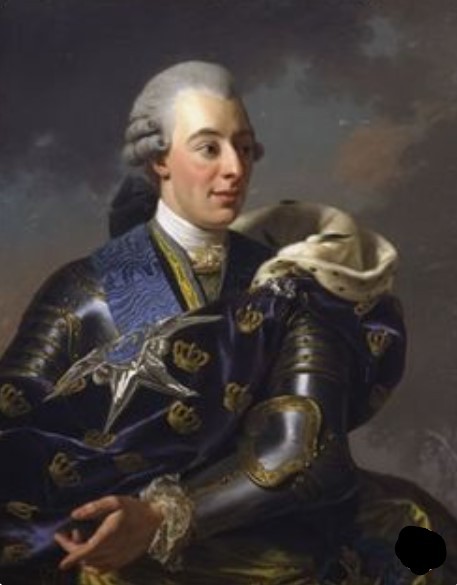
1746 – Gustav III was King of Sweden from 1771 until his death. (d.1792) He was the eldest son of King Adolph Frederick and Louisa Ulrika of Prussia, she a sister of Frederick the Great of Prussia. (See above)
Gustav was educated under the care of two governors who were amongst the most eminent Swedish statesmen of the day, Carl Gustaf Tessin and Carl Fredrik Scheffer; but he owed most perhaps to the poet and historian Olof von Dalin. His education was far more liberal than that of his uncle, Frederick the Great.
On the whole, Gustav cannot be said to have been well educated, but he read very widely; there was scarcely a French author of his day with whose works he was not intimately acquainted;and his enthusiasm for the new French ideas of enlightenment was sincere.
A vocal opponent of abuses by the nobility, he seized power from the government in a coup d'état in 1772, ending the Age of Liberty and venturing into a campaign to restore royal autocracy. As a bulwark of enlightened despotism, his expenditure of considerable public funds on cultural ventures contributed to his controversial rule. Attempts to seize first Norway through Russian aid, then to recapture the Baltic provinces through a war against Russia were unsuccessful, although much of Sweden's former military might was restored. An admirer of Voltaire, Gustav legalized Catholic and Jewish presence in the realm and enacted wide-ranging reforms aimed at economic liberalism, social reform and the abolishment of torture and capital punishment (although freedom of the press was curtailed).
A patron of the arts and benefactor of arts and literature, Gustav founded several academies, among them the Swedish Academy, created a National Costume and had the Royal Swedish Opera built. In 1772 he founded the Royal Order of Vasa to acknowledge and reward those Swedes who had helped to advance process in the fields of agriculture, mining and commerce.
By proxy in Christiansborg Palace, Copenhagen, on 1 October 1766 and in person in Stockholm on 4 November 1766, Gustav married Princess Sophia Magdalena, daughter of King Frederick V of Denmark. The match was not a happy one, owing partly to an incompatibility of temper; but still more to the interference of the jealous Queen Mother. The marriage produced two children: Crown Prince Gustav Adolf , and Prince Carl Gustav, Duke of Småland. For the consummation of the marriage, the king requested the assistance of Adolf Munck, reportedly because of anatomical problems both spouses possessed. Gustav's mother supported rumors that he was not the father of his first son and heir. It was rumored at the time that Gustav indulged in homosexuality. The close personal relationships he formed with two of his courtiers, Count Axel von Fersen and Baron Gustav Armfelt, were alluded to in that regard. His sister-in-law implied as much in a diary.
Gustav was assassinated at a masked ball by a conspiracy of noblemen claiming only to commit tyrannicide, although later research has revealed more personal motives.


1928 – Heterosexual actor Michel Serrault (d.2007) was a French stage actor and film star who appeared from 1954 until (and including) 2007 in more than 150 films. He was best known for his role as Zaza in La cage aux folles.
Although he wanted to be a circus clown, Serrault's parents sent him to a seminary to study for the priesthood. He spent only a few months there before taking-up acting. His first professional job was in a touring production in Germany of Molière's Les Fourberies de Scapin. After military service in Dijon, he returned to Paris and joined Robert Dhéry's burlesque troupe and appeared in their second hit show, Dugudu.
In 1948, he began his career in the theatre with Robert Dhéry in Les Branquignols. His first film was Ah! Les belles bacchantes, starring Robert Dhéry, Colette Brosset (Dhéry's then-wife), and Louis de Funès in 1954. Serrault played in the 1955 suspense thriller Les diaboliques, starring Simone Signoret and directed by Henri-Georges Clouzot.
He met and worked with Jean Poiret in the early 1950s, which led to a song and comedy cabaret act and their playing together in 18 films from 1956 to 1984, and in a number of plays written by Poiret. The films they worked together in included Cette sacrée gamine (1956), with Brigitte Bardot, and Sacha Guitry's last film, Assassins et voleurs (1957).
From February 1973 through 1978, he portrayed the role of Albin/Zaza opposite Jean Poiret in the play La cage aux folles, written by Poiret. He recreated the role for the film version of the play, which was released in 1978. Serrault died from relapsing polychondritis at his home in Équemauville on 29 July 2007 at age 79.


1944 – German performance artist and counter-tenor Klaus Nomi was born in Immenstadt, Germany (d.1983). Nomi is remembered for bizarrely theatrical live performances, heavy make-up, unusual costumes, and a highly stylized signature hairdo which flaunted a receding hairline. His songs were equally unusual, ranging from synthesizer-laden interpretations of classic opera to covers of 1960s pop standards like Chubby Checker's "The Twist" and Lou Christie's "Lightnin' Strikes."
Born Klaus Sperber in Immenstadt, Germany, in Nomi's youth in the 1960s, he worked as an usher at the Deutsche Opera in West Berlin where he would sing on stage in front of the fire curtain after the shows for the other ushers and maintenance crew. Around that time he also sang operatic arias at a Berlin Gay club called Kleist Casino. Nomi moved from Germany to New York City in the mid-1970s. He began his involvement with the art scene based in the East Village. Nomi died on August 6, 1983 in New York City, one of the first celebrities to die of an illness complicated by AIDS. His ashes were scattered over New York City.


1951 – Michael Cohen (d.1997) was an American singer-songwriter from New York City. He released three albums in the 1970s which were among the first to deal with explicitly gay themes.
Cohen was licensed as a cab driver in New York City in 1972.
Cohen self-released his first album, eponymously titled Mike Cohen, in 1972. This was followed by two albums on Folkways Records, "What Did You Expect: Songs about the Experiences of Being Gay" (1973) and "Some of Us Had to Live" (1976). The latter two are available from Smithsonian Folkways.
Cohen was influenced by James Taylor and Leonard Cohen (no relation) and his music is very much in the folk rock style.
"What Did You Expect: Songs about the Experiences of Being Gay" consisted of nine songs that recounted Cohen's coming-out experience, ballads about his lover and a cover of a song by Leonard Cohen (no relation).
"The Last Angry Young Man", which opens What did You Expect?, deals with the misconceptions around homosexuality of the older generation while "Gone", from the same album, deals sensitively with the death of a gay friend. Frieze Magazine describes Cohen's "Bitterfeast" from the same album as a "raw and chokingly emotional" ballad based on a poem by Leonard Cohen.
After releasing a third album on a small label, Cohen "dropped off the radar" until his death in 1997.
You can read some of his lyrics in his own hand here: Queer Music Heritage


1983 – Frank James Michael Grande Marchione , usually credited as Frankie Grande, is an American musical theatre actor, producer and YouTube personality.
Grande was born in New York City. He grew up in Englewood, New Jersey and moved with his mother to Boca Raton, Florida, at age 10. His half-sister is singer and actress Ariana Grande. He graduated from Muhlenberg College in Pennsylvania in 2005, having triple-majored in biology, theatre and dance. Grande is openly gay.
He began his acting career in 2007, appearing as Boots the Monkey in a national tour of Dora the Explorer Live! (Dora's Pirate Adventure) and in regional theatre productions including the title role in George M!, Mike Costa in A Chorus Line and Lewis in Pippin, among others. Later in 2007, he joined the Broadway cast of the musical Mamma Mia!, in the ensemble and as understudy for Eddie, in which he performed for three years. Grande was named "Mr. Broadway" in the "Mr. Broadway 2007" charity benefit. He co-founded the non-profit arts organization "Broadway in South Africa", travelling to South Africa to work with disadvantaged youth for seven years, before it merged with buildOn. Grande also helped buildOn to build a school in a rural village in Malawi, and in 2014 buildOn honored him for his efforts with its Global Impact Award.
Grande has produced shows on and off Broadway, including Broadway productions of Hamlet (2009) starring Jude Law, La Bête (2010–11) starring David Hyde Pierce, and Born Yesterday (2011) starring Jim Belushi. He also produced Brooke Shields' one-woman cabaret show in 2011. Grande has performed in cabaret acts in New York City, including at Birdland Jazz Club and 54 Below.
In 2012, Grande established a YouTube channel and has also been building a following on Twitter and Instagram. Earlier in 2014, he was a contestant on the reality television series Big Brother 16. His philanthropic work includes co-founding the non-profit arts organization "Broadway in South Africa" and work for buildOn.


11 notes
·
View notes
Text

Antinoüs, head of the remains of a statue found during excavations conducted in the 1930's, to build the Via dei Fori Imperiali.
Now exhibited in the Centrale Montemartini, Via Ostiense, Roma.
One of the youngest-looking portrait of Antinoüs.
Setting : ► https://www.tumblr.com/arbandes/741696868914003968/antino%C3%BCs-and-his-contemporary-friends-in-the
6 notes
·
View notes
Text
Maraposas & Milagros
Summary:
In the Land of Miracles there’s a special ceremony taken place to honor the woman who founded their homeland and her family by lighting butterfly shaped candles and setting them free into the night sky. The time leading up to the event is a big community party in the town’s center.
Cards: Regalo Ruana
This limited time card selection is inspired by traditional Colombian clothing. Each card gets a ruana with either a dress or shirt and pants. Everyone in the card holds their butterfly candle
SSR: Oscar, Maya, Renata, Estella, Isabelle, Freya, and Lilia
SR: Minako, Ophelia, Riddle, Jade, Drew, Juno, Marian, and Darling
R: Marrin, Jack, Phillipa, Lily, and Ayumu
Tags: @adrianasunderworld @mangacupcake @writing-heiress @marrondrawsalot @anxious-twisted-vampire @abyssthing198 @achy-boo
Concept:
It all starts when Oscar gets a call from one of his sisters reminding him of the festival that’s happening tomorrow. He promised his sisters that he would bring a few friends since they worry about him at NRC. After hanging up he goes to Ramshackle to invite the Prefects. Estella finds him at the door and lets him in. He sees the Prefects sitting down in the lounge and asks them, and Grim, if they would like to visit his home. He goes into further details about the festival, Oruguita Liberta, in which everyone in his town honors the founding woman and her family by lighting candles that turn into butterflies and flutter around in the air. He then asks if they’re willing to go, to which they say yes. He thanks them and goes on to invite Marrin, Riddle, Jade, Jack, and Lilia.
The next day they arrived at the Mirror Chamber and are taken to the Land of Miracles. The town square, Famila Center, is decorated with many butterfly themed decorations and vendors selling their goods. They meet Maya and Reneta, with their friends. After greetings were exchanged the triplets take them to their house so they can put their bags down and get changed into their attire. Grim even gets a bow that’s decorated with butterflies. After they get changed they meet their mom, Alana Maldición. She welcomes her children home and their friends. She tells them they’re free to explore the square for the day but reminds them to be back before sundown. Before they depart, she serves some snacks for her guests as hospitality is very important in the home.
Lily asks why they need to meet back and Reneta explains that they’ll be getting their candles for later. They depart from the house and head back to the square. The triplets take them to a group of statues with a fountain surrounding them. They tell them it’s the Gifted Family, the family who first settled in the area. One by one the triplets go through the family:
The Founder (Alma Madrigal)
The Healing Cook (Julieta Madrigal)
The Concerning Father (Agustin Madrigal)
The Botanical Keeper (Isabela Madrigal)
The Pressure Reliever (Luisa Madrigal)
The Magicless Savior (Maribel Madrigal)
The Tamer of the Weather (Pepa Madrigal)
The Energetic Father (Félix Madrigal)
The Hearer of Secrets (Dolores Madrigal)
The Master of Shifting (Camilo Madrigal)
The Father of Beastaming (Antino Madrigal)
The Seer of the Future (Bruno Madrigal)
As they talk about the family, Oscar mentions that there isn’t much about the Seer of the Future as at one point, people didn’t talk about him for some reason. When asked why, they said that they didn’t know why. After the history lesson, they head to a vendor and try the variety of arepas, a staple food in their home. It’s said that recipe was crafted by the Healing Cook but only her cooking had the power to heal whoever ate it. After she died, the dish was passed down to honor her. Oscar gets a few of them for himself as they’re his favorite food. They also get coffee to drink.
Minako notices the kids drinking the coffee and asks if it’s normal. Maya confirms that it is, but it’s best not to give them too much. After eating they go exploring around the other stands. Grim comes across a puzzle where by connecting the pieces it’ll reveal a secret picture. He gives it a go and the picture is of the Botanical Keeper and Magicless Savior hugging. As they continue roaming around, they find souvenirs for their friends back at school. Riddle is intrigued by the many toys that were based on animals that were with the Father of Beastaming. Lilia is fond of a cloak that can temporarily change your looks to whoever pops into mind. Jack likes the weights with donkeys on them. Jade is fond of the many mushrooms in their terrariums, some said to have been crafted by the Botanical Keeper. Estella likes the butterfly handkerchief she found, and a plush donkey. They also try more local food like coco rice and patacones.
Then they come across a little stage where a variety of creatures very performing shows. Anyone can enter if they wish and Oscar decides to enter and use the rats to put on a telenovela. While he plots out the story the rest of the group goes and captures rats (Twistune here) Once the rats were gathered he rehearses the plot and the show is on. The group were confused by the plot but everyone else loves it. Once sundown hits they all head to the triplets home and get their candles. She also hands them a match saying that turns the candle’s shape into a butterfly.
Alana leads the group to the edge of a river, one that’s incredibly beautiful. They all wade into the shallows and watch the sun fall. Once the moonlight is shining every strikes their match and lights their candles. After a few moments of waiting, and complaining from Grim, they all watch in awe as the candle glows from the inside and transforms into a butterfly. The butterflies take off flying in a circle around everyone in town. As they stand there and watch for a moment they start to hear music. Alana says that part of the tradition is to dance underneath the lights and that’s what they all do. (Twistune here)
5 notes
·
View notes
Text
Names generated from female French and male Italian forenames
Adriore Adèle Agalottino Aganne Agote Aimmony Aimone Aimoniore Aleopo Alino Alion Alizian Alodierto Amanne Amasoteo Ambannio Ambathetro Ambero Ambrino Amene Amildo Ampippe Améline Améliviero Anabasse Anadineve Anati Anatro Andrélène Angelizio Anlucrie Annelo Anninelero Annio Annique Antino Arcomé Arcopasire Ardietrine Ariche Ariste Arline Arlio Arnazio Artorradde Asque Auband Aubinicolo Aurice Aurie Axello...
Babioello Babresimo Babrie Balette Barmiro Belandre Belino Belle Bello Belverrine Berpasio Berrale Bertonne Bette Bettine Biante Blainique Blaino Blanienve Blaurio Blavicole Canbalizio Cangele Carco Carguigido Carjoletto Carlot Carnés Carolène Carse Cassaldo Catte Celle Celoremo Ceraline Cerichine Cette Channe Chante Chartine Chelmo Chlodienzo Chlomence Chricoste Chrie Chrine Ciano Cilio Ciralie Claine Claino Clane Clangenzio Clanne Clanute Clorgidine Cloémerolo Cléna Colane Colanne Coldo Colothée Colène Conarco Condine Cordino Cosimo Criampie Crène Céliacco Célène Dannio Denardine Dento Denzo Desto Dionsimond Doleinanne Domenzo Doraldo Dordilde Dorescolo Doria Dorique Doromo Dorrizio Doréanne Dorée Edette Elane Eleste Elino Eliovane Ellenzo Elyne Emainio Emmardo Emonato Eranette Eraphée Ermine Ernaëlle Ernaïs Ernino Ertomildo Euggele Evato Eziano Fabele Fabrie Fabrogio Faldetteo Faldo Federno Feriche Ferico Feriline Ferme Feroldomo Fienzo Fierise Fifio Fonne Fonnettele Franicesco Franto Frélix Fulvine Gathe Gelle Gente Genthele Geonsti Georlo Gerio Gernaïde Gervie Gettello Ghernano Ghilbervio Giamo Gianderio Gianne Giano Giante Giantine Gilcasquel Gilexano Gilleuro Gioccarele Giolomille Giorélieta Giostono Girine Girélaine Giteo Giuse Giustine Gualdette Gualtino Gueliano Gueloé Gugge Guigianta Gusette Heriandris Herie Hyaccasirc Hyaco Hélino Igide Igine Igirento Inéliane Iriamino Irèse Isarbetro Istine Istonne Ivine Jeanie Jeannio Jeano Jeantello Jeanto Jeaurino Josil Jossilvite Josvano Julia Julvio Kardomeno Laldo Lambette Laudino Laugliero Lauro Lette Lodio Lomarilino Lorentine Lorgio Lucacona Lucaren Lucidie Lucil Lucine Lucino Lucrène Ludie Ludino Lydino Léona Léonelique Léonique Léony Mabrie Madeophie Madine Madègero Maino Mange Mannarc Manne Mannio Manta Mantie Marce Marcele Marcio Mardaste Mardo Mareine Mareminne Mariane Mariette Marlandrie Marlo Marlomilix Marme Marmine Maropo Masquel Maure Maximo Maxino Maxisla Maxiste Michelyne Migna Mignario Migosuè Milvita Mimée Miralio Mirenzo Mirgabero Mirgiline Mirée Moniette Mélairc Méliero Méline Mélio Méliovano Mélizio Nadanbal Nadino Nanno Narescolo Naridonne Natte Naïsetro Nicorilio Ninie Niqueriste Noele Noello Océano Ombettazio Omele Omestale Orene Orenique Orélippe Osille Otharonny Otine Pacido Paoldo Paolette Paoline Paolène Pasine Paudinny Paule Paurie Pauro Pauronico Pause Phino Pieletro Piermarine Piero Piette Plaine Prisèle Qualdo Racco Racolinco Rapucio Reane Rellexano Rentie Renzo Riano Rincenne Rinne Roano Romentis Rondre Rontine Rosane Rosettine Rostaldo Rosto Roxandovie Roxanine Sabrie Sabro Sabroneve Sabruno Sacore Saldo Salexanine Salierie Salte Sance Sanlucine Sanne Sarcole Sarentino Sarto Sette Siglippo Simmo Simonie Sioele Solan Solielie Solodio Sopharcia Strie Suzabe Sérizio Taldo Talino Toforento Tomondrée Tonaro Torlot Ubatrobbe Umbenette Umbrianne Valfrigio Valio Valvio Vando Verfraldo Vidie Vidio Vielio Vierne Viertine Virgio Vitte Vivano Vivie Véricopato Yanine Yvonie Zabino Zaraffaude Égéliane Égélotte Égério Élino Émico Émilitange
2 notes
·
View notes
Text
Top 10 Mobile App Development Companies in Gurgaon | Top 10 Company 2023

Gurgaon, often referred to as the "Millennium City," is a hub of technological innovation in India. The city is home to numerous software development companies, including some of the best in mobile app development. If you're on the lookout for a trusted mobile app development partner in Gurgaon, you're in the right place. We've curated a list of the top 10 mobile app development companies in Gurgaon to help you make an informed decision.
1. Antino Labs
Antino Labs is a prominent player in the Gurgaon mobile app development scene. They offer end-to-end app development services, including design, development, and deployment. With a focus on user-centric design and robust functionality, Antino Labs has gained recognition for delivering high-quality mobile solutions.
Website: https://www.antino.com/
2. Rajmith
Rajmith is a well-established mobile app development company known for its commitment to excellence. They specialize in crafting custom mobile apps that cater to diverse industry needs. Rajmith portfolio boasts a wide range of successful projects, making them a trusted choice for businesses seeking innovative mobile solutions.
Website: https://www.rajmith.com/
3. Yuasa Software Labs
Yugasa Software Labs is a dynamic player in the mobile app development arena. They are renowned for their expertise in developing mobile apps for various platforms, including iOS and Android. Yugasa focus on quality and innovation has earned them a reputation as a go-to choice for businesses looking to transform their ideas into reality.
Website: https://yugasa.com/
4. Quytech
Quytech is a name synonymous with cutting-edge technology solutions. They are known for their expertise in augmented reality (AR) and virtual reality (VR) app development. Quytech's commitment to pushing the boundaries of innovation has positioned them as leaders in the emerging technology space.
Website: https://www.quytech.com/
5. Orange Mantra
Orange Mantra is a trusted partner for businesses seeking mobile app development services. Their team of skilled developers and designers collaborates to create engaging and user-friendly mobile applications. Orange Mantra's client-centric approach sets them apart in the competitive app development landscape.
Website: https://www.orangemantra.com/
6. Infodart Technologies Pvt. Ltd.
Infodart Technologies is a global player with a strong presence in Gurgaon. They offer end-to-end mobile app development services, along with consulting and digital transformation solutions. Infodart ability to deliver complex projects with precision has earned them accolades from clients worldwide.
Website: https://www.infodartglobal.com/
7. Infosys
Infosys, a global tech giant, has a significant presence in Gurgaon. While they are known for their diverse array of services, mobile app development is a notable part of their portfolio. Infosys leverages its vast resources and expertise to deliver comprehensive mobile solutions to clients across industries.
Website: https://www.infosys.com/
8. Wama
Wama Technology is a rising star in Gurgaon's mobile app development landscape. They specialize in crafting mobile apps that offer seamless user experiences. Wama Technology's commitment to staying updated with the latest industry trends positions them as innovators in the field.
Website: http://www.wamatechnology.com/
9. Tata Consultancy Services (TCS)
Tata Consultancy Services, a global IT services giant, has a significant presence in Gurgaon. They offer a wide range of technology services, including mobile app development. TCS leverages its extensive experience and resources to provide scalable and robust mobile solutions to clients worldwide.
Website: https://www.tcs.com/
10. Mobibiz
Mobibiz is a Gurgaon-based mobile app development company known for its focus on user-centric design and functionality. They cater to a diverse clientele and have a strong track record of delivering successful mobile solutions.
Website: https://www.mobibiz.in/
In conclusion, Gurgaon boasts a thriving ecosystem of top-notch mobile app development companies. Whether you're a startup with an innovative app idea or an established enterprise looking to enhance your digital presence, these companies have the expertise to turn your vision into a reality. It's important to conduct thorough research and select the company that aligns best with your specific requirements. With the right mobile app development partner, you can transform your app dreams into a successful reality and drive your business to new heights.
Related: Pioneering Mobile App Development in Gurugram Delhi NCR
2 notes
·
View notes
Text
Today the Church honors Sts. Barses and Eulogius, Bishops of Edessa, and Protogenes the Confessor, Bishop of Carrhae and Companions.
Orate pro nobis.
Sts. Barses, Eulogius, Protogenes, and companions suffered from the heretical Arians in the second half of the fourth century. The emperor Valentius Valens (364-378 AD), wishing to propagate the Arian heresy, fiercely persecuted the Orthodox.
In the city of Edessa, he removed Saint Barses, a champion for Orthodoxy, from the bishop’s throne. He sent him for confinement on the island of Arad. The Orthodox population there received the exiled bishop with great honor. The emperor, furious, banished him farther, to the Egyptian city of Oxyrhynchos, but there also the warm welcome was repeated. Then St. Barses was banished to the very frontier of the imperial realm, to the faraway city of Thenon where, exhausted by his exiles, he died.
At Edessa, the emperor Valentius Valens placed the Arian pseudo-bishop Lupus upon the episcopal cathedra. Wolflike in name and deed, he scattered the sheep of Christ’s flock. The Orthodox population of Edessa, both clergy and laity, ceased to attend their church, which had been seized by the Arians. They gathered outside the city and celebrated the divine services in an open area.
After he learned of this, the emperor ordered the eparch Modestus to kill all the Orthodox who met for divine services outside the city. The eparch pitied the city, and he informed the Orthodox that they should not attend divine services. The Orthodox, fervent in the FaithChrist, went as one to the place where they usually gathered for prayer.
Eparch Modestus, obeying his orders, went there with his armed soldiers. Along the way he saw a woman who hastened to the services with her small child, so as not to deprive him of the Sacraments. Shaken, Modestus turned back with his soldiers. Appearing before the emperor Valentius Valens, he urged him to cancel the decree to kill all the Orthodox and to apply it only to the clergy.
The emperor agreed, and so they led persons of spiritual rank to the emperor, and in the lead the oldest presbyter Eulogius. The emperor urged them to enter into communion with the pseudo-bishop Lupus, but they all refused. After this, they sent eighty men of clerical rank in chains to prison in Thrace. The Orthodox met them along the way, revering them as confessors, and furnished them all the necessities. Learning of this, the emperor ordered the martyrs to be taken two by two, and to disperse them to remote areas.
The holy presbyters Eulogius and Protogenes were sent to the Thebaid city of Antinoe in Egypt. There by their preaching they converted many idol-worshippers to Christ and baptized them. When the emperor Valentius Valens perished and was succeeded on the throne by the holy emperor Theodosius (379-395), the Orthodox confessors remaining alive after the persecution were returned from exile. The holy presbyters Eulogius and Protogenes returned to Edessa. In place of the dead and banished Saint Barses, presbyter Eulogius was elevated to Bishop of Edessa, and the holy presbyter Protogenes was made bishop in the Mesopotamian city of Carrhae. Both saints guided their flocks until their death, which occurred at the end of the fourth century.
Almighty God, who gave to your servants Barses, Eulogius, Protogenes, and companions boldness to confess the Name of our Savior Jesus Christ before the rulers of this world, and courage to die for this faith: Grant that we may always be ready to give a reason for the hope that is in us, and to suffer gladly for the sake of our Lord Jesus Christ; who lives and reigns with you and the Holy Spirit, one God, forever and ever.
Amen.
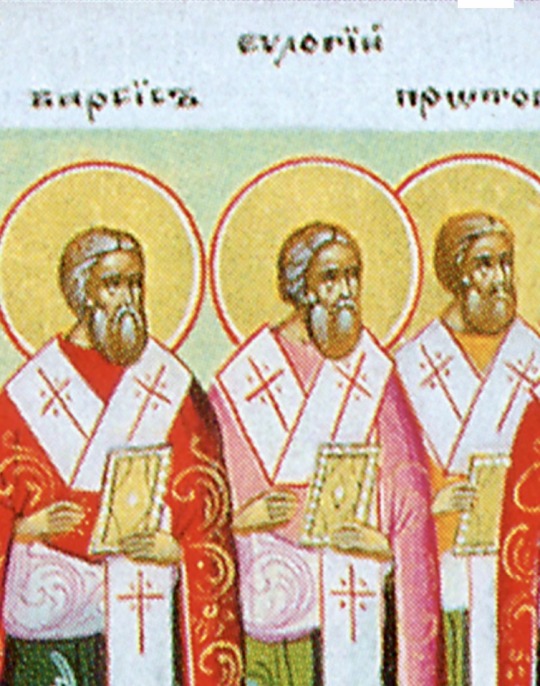
2 notes
·
View notes
Text
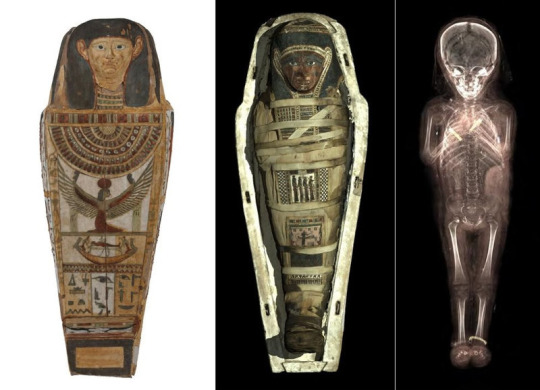
Child mummy and coffin, Egypt, Antinoe, Ptolemaic Period {310 to 30 BC), Museum of Art and Archaeology, Guéret. © IMA solutions Museum of Art and Archaeology - Gueret
This child's mummy revealed all its secrets thanks to IMA Solutions, which carried out its 3D scanning by tomography, a method to reveal the invisible by non-invasive and non-destructive techniques. The virtual exploration of this mummy made it possible to detect, under the strips, the presence of amulets, a roll of papyrus (may be a Book of the Dead?) And many jewels. A bio-anthropological analysis made it possible to affirm that it was a 78cm girl, aged 2 to 3 years old.
Courtesy Alain Truong
10 notes
·
View notes
Text

Antinous: Festival of the Red Lotus
In August 22, the modern cult of Antinous celebrates the Festival of the Red Lotus, which is said to have sprung from the blood of the Marousian Lion hunted by Antinous and Hadrian.
The white and blue flowers native to Egypt and described as “lotus” in ancient Egyptian mythology and art are actually water lilies, members of the genus Nymphaea. Blooms of the blue Egyptian water lily Nymphaea caerulea open and close during daylight hours; the white Egyptian water lily Nymphaea lotus opens at dusk and closes in the mid-morning. Folk tales describe the flowers as rising from the water at dawn or dusk each day, but rather the buds form underwater and emerge above the water as the stems lengthen, open and close each day during the few days of bloom, and then sink beneath the water after the period of bloom is finished. The sinking below and rising above the water links the “lotus” with the mythology of rebirth.
The red Egyptian lotus Nelumbo nucifera is a member of the family Nelumbonaceae. Native to India, East Asia, and Southeast Asia. It seems to have been brought to Egypt in the Late Period, in the 6th or 7th centuries BCE. Its appearance is very different to the blue and white lilies, with rounded petals rising well above the water.
It is this flower which legend associates with Antinous. A poem from the reign of Diocletian (284 – 305 CE) links the Lion Hunt with the lotus:
The nymphs began to crown their tresses
With the flower named after Antinous,
Which to this day preserves
The mighty spear of the hunter.
Into the Nile he hurried for purification
Of the blood of the lion…
– Payprus Oxy. 63.4352 (X)
Another text from the 3rd century CE specifically mentions the color of the lotus of Antinous:
But since I have mentioned Alexandria, I know that in that beautiful city there is a garland called the garland of Antinous, which is made of the lotus, which grows in those parts. And this lotus grows in the marshes in the summer season; and it bears flowers of two colours; one like that of the rose, and it is the garlands woven of the flower of this colour which are properly called the garlands of Antinous; but the other kind is called the lotus garland, being of a dark colour. And a man of the name of Pancrates, a native poet, with whom we ourselves were acquainted, made a great parade of showing a rose-coloured lotus to [H]adrian the emperor, when he was staying at Alexandria, saying, that [p. 1082] he ought to give this flower the name of the Flower of Antinous, as having sprung from the ground where it drank in the blood of the Mauritanian lion, which Hadrian killed when he was out hunting in that part of Africa, near Alexandria; a monstrous beast which had ravaged all Libya for a long time, so as to make a very great part of the district desolate.
– Athenaeus. The Deipnosophists. Or Banquet Of The Learned Of Athenaeus. London. Henry G. Bohn, York Street, Covent Garden. 1854. (X)
Ave, ave Antinoe! The red lotus reminds us of your courage. May we, too, rise after the struggles of life, and join you in the company of the immortals!
https://honorthegodsblog.wordpress.com/2018/08/22/antinous-festival-of-the-red-lotus/
2 notes
·
View notes